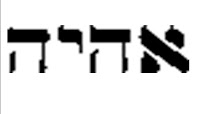As we learned last week, most cultures have used crystals and/or other stones religiously/spiritually for a very long time. This week we will seek to answer the question: Is crystal healing spiritually acceptable?
The use of crystals and/or other stones in spiritual healing, is an ancient Spiritually-based modality which utilizes Vibratory Spiritual Energy (Universal Life Energy, Prana, Chi, Ki, Holy Spirit, etc.).
In 1150, Saint Hildegard documented how the vibrational energy in crystals works; crystals store energy in their molecules and magnify/radiate electromagnetic energy which vibrates to one, or more, of seven specific light ray frequencies found in the universe. Each of the seven different colors of light rays (blue, yellow, pink, white, green, red, and purple), vibrate at a different energy frequency in the universe.
Angels, like crystals and/or other stones, also vibrate to
the different color/light ray frequencies in the universe.
Many people use crystals and/or
other stones, to invoke help from the spirit world. Throughout history, people have used crystals
and/or other stones, to help them connect to the Spirit Realm; e.g., angels. Most people use crystals and/or other stones
that correspond to the energy frequencies of a specific angelic being and prayerfully
invoke the assistance of this angelic being, to help heal another.
The Bible, the Torah, and the Qur’an
warn us to be very careful though, as we might connect with dark, fallen angels,
instead of holy angels of light. They are not alone in
their warning to us.
“The Shadows
are out there: They exist, in the invisible world that parallels our own,
living creatures. . . . The terms ‘Imp’, ‘Evil Spirit’ and ‘Demon’
are fairly accurate. They are very strong. . . . The most intelligent
variety . . . are capable (if someone is helpful enough to open a
doorway for them) of entering our world. . . . They can enter your
body . . . , even asserting a degree of control over you.
Yes, this is exactly like the old stories of Demon possession.” (Anonymous
promoter of witchcraft).
In an effort to
reduce our light, the dark does it's best to slip through the smallest of
pinholes. Its’
goal is to distract and mislead us from developing a personal relationship with
the Creator/God.
When using crystals and/or other stones for
healing purposes, there is no need for us to be afraid of the dark; we simply
need to be aware enough to notice it, if it
shows up, and stop it from succeeding in its' mission.
Some people, hoping to gain knowledge, especially about the future, have gazed into crystal balls, hoping to find divine answers to their questions. This is a form of divination, and is often viewed as being spiritually dangerous, and something to be avoided.
"Many legends and
tales speak of its use. Its practice is found in Greece,
Rome, and throughout Mesopotamia.
The Druids of England
utilized gazing, as did people in Scotland,
France, Germany, and elsewhere throughout Europe. Egypt, India, Babylon, and Persia also had their
crystal-gazing practitioners." (Ted
Andrews. Crystal Balls & Crystal Bowls: Tools for Ancient Scrying &
Modern Seership.)
In the bible, divination is not
forbidden for those who were anointed by the Creator/God; e.g., the
priests. They were exempt and performed
divination rituals inside the temple, during times of sacrifice and to divine
the Creator’s/God’s will.
As noted last week, Aaron’s breastplate contained the crystals
known as the Urim (lights) and the Thummim
(perfections), and were used to help him discern answers, from the
Creator/God, for the people. Exodus
28:30
In Tibetan Buddhism, “the
motivation for performing divinations must always be pure - done solely to
bring relief for the suffering of all beings and not for one's own personal
gain or fame.” Lama Dawa Rinpoche
"Let no one be found among you who practices divination or sorcery, interprets omens, engages in witchcraft, or casts spells, or who is a medium or spiritist or who consults the dead. Anyone who does these things is detestable to God." Deuteronomy 18:10-12
The Qur’an also cautions us to avoid divination practices.
"O ye who believe! Intoxicants and gambling, (dedication of) stones, and (divination by) arrows, are an abomination; of Satan's handwork: eschew such (abomination), that ye may prosper." Qur’an: Surah V. 90
The power of the Creator/God is far greater than the power of the
Occult. Developing and
maintaining a direct connection with the Divine Light/Christ Consciousness, and
a personal relationship with the Creator/God, is our greatest protection from
the influences of the dark forces.
Crystals and other stones are created by the Creator itself. There is nothing dark or evil about crystals and/or other stones, themselves. When they are used to bring glory to the Creator/God by helping and healing other people, they can, with the Creator's/God’s help, stimulate spiritual growth, bring about positive personal transformation and lead to a healthier state of being.
Let us develop and/or maintain a direct connection
with the Divine Light/Christ Consciousness.
Let us develop and/or maintain a personal relationship with the
Creator/God, and if we are guided to use crystals and/or other stones, let us
glorify the Creator/God by prayerfully invoking the assistance of the holy angels of light, on behalf of others, not
ourselves.


